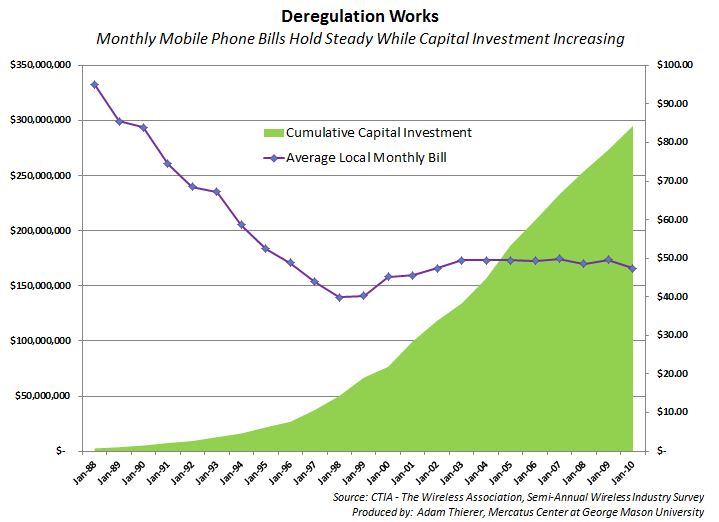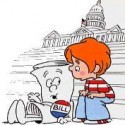The FCC proposed new rules today aimed at combating wireless “bill shock,” a term that describes mobile subscribers getting hit with overage charges they didn’t anticipate. The proposed rules would require wireless providers to create a system for alerting customers when they are about to incur extra usage charges for voice, text, data, or roaming.
I can certainly see why some consumers may be frustrated with wireless pricing practices. But this frustration hardly constitutes evidence that the mobile marketplace is actually failing. Yes, mobile carriers sometimes make mistakes, and they probably need to do more to ensure their customers understand how overage charges work.
Competitive forces, however, are far better equipped than federal regulators to punish providers that engage in genuinely harmful practices. And if the federal government must “do something” about bill shock, educating mobile subscribers about where to locate and track their usage information is a far better approach than prescriptive, burdensome federal regulation.
Hypocritically, even as the FCC tries to reign in bill shock, its own policies are harming consumers far more than any wireless industry practices. The FCC has again and again put off spectrum auctions that would enable mobile providers to offer better services at lower prices. As a result, consumers are suffering to the tune of billions of dollars each year. Economists Thomas Hazlett and Roberto Munoz published a study last year in which they concluded that U.S. wireless prices would decline by 8% if the FCC were to allocate an additional 60mhz of spectrum to mobile telephony.
If the FCC truly cares about wireless subscribers, rather than simply grandstanding against competitive (if imperfect) mobile carriers, the Commission’s top priority should be to aggressively free up the airwaves.
But analysts at the Competitive Enterprise Institute urged the FCC not to interfere with market disputes and to instead turn its focus to the real obstacle to the wireless marketplace – the FCC’s own anti-consumer approach to spectrum allocation.
“Educating mobile subscribers about where to locate their up-to-date usage information – which all major wireless providers make available – is a far better solution to ‘bill shock’ than prescriptive federal regulation,” argued Ryan Radia, CEI Associate Director of Technology Studies.
Radia pointed out that some consumers’ frustration with current wireless pricing practices is hardly evidence that the mobile marketplace is failing. “To be sure, mobile carriers make occasional mistakes, and they need to work harder to ensure their customers stay well-informed,” Radia said. “But competitive forces are far better equipped than federal regulators to punish providers that engage in genuinely harmful practices or fail to satisfy consumers’ evolving preferences.”
In its efforts to address wireless bill disputes, the FCC purports to represent consumers’ interests; yet, Radia argued, the agency is harming consumers by delaying action to free up radio spectrum — the lifeblood of wireless communications.
“Consumers are suffering to the tune of billions of dollars each year on account of the FCC’s failure to free up radio spectrum for mobile communications,” Radia said. “Economists Thomas Hazlett and Roberto Munoz recently published a study finding that U.S. wireless prices would decline by 8% if the FCC were to allocate an additional 60mhz of spectrum to mobile telephony.”
“If the FCC genuinely cares about wireless subscribers, it should focus on aggressively freeing up the airwaves instead of comparatively trivial issues like bill shock.”
 At the last possible moment before the Christmas holiday, the FCC published its Report and Order on “Preserving the Open Internet,” capping off years of largely content-free “debate” on the subject of whether or not the agency needed to step in to save the Internet.
At the last possible moment before the Christmas holiday, the FCC published its Report and Order on “Preserving the Open Internet,” capping off years of largely content-free “debate” on the subject of whether or not the agency needed to step in to save the Internet.



 The Technology Liberation Front is the tech policy blog dedicated to keeping politicians' hands off the 'net and everything else related to technology.
The Technology Liberation Front is the tech policy blog dedicated to keeping politicians' hands off the 'net and everything else related to technology.